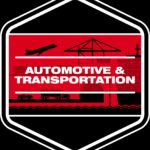Embarking on a car modification project often involves modernizing the cockpit, and digital dashes are a popular upgrade. If you’re considering a sleek, information-rich display like the Holley Digital Dash and wondering about connecting it to your car’s OBD2 system, you’re in the right place. This guide explores the world of digital dashes, focusing on how they interface with your vehicle’s computer, and what to consider when choosing the right setup for your needs.
Digital Dash Options: Beyond Holley
The Holley Digital Dash is a well-known name in the market, admired for its aesthetics and functionality. Its appeal lies in offering a customizable display that replaces traditional gauges with a modern, digital interface. For projects like the Bugeye Sprite rebuild mentioned in enthusiast forums, where space is at a premium and visibility is key in an open cockpit, a digital dash presents a compelling solution.
However, Holley isn’t the only player in the digital dash arena. Brands like AiM (often confused with AEM, another reputable manufacturer) offer sophisticated dashes like the AiM MXS, favored in racing circles for their precision and data logging capabilities. AEM itself also produces digital dash displays, providing integrated solutions especially beneficial if you’re already using their engine control units (ECUs).
For budget-conscious builders, there are also more affordable options available online, such as those found on Amazon. These units often promise similar functionality at a fraction of the cost, though build quality and long-term reliability might be considerations. These budget-friendly dashes frequently connect via the OBD2 port, making them seemingly plug-and-play.
OBD2 Connectivity: The Gateway to Data
The OBD2 (On-Board Diagnostics II) port is a standard interface in modern vehicles, designed primarily for emissions testing and diagnostics. It also provides access to a wealth of engine and vehicle data, which digital dashes can tap into. Many aftermarket digital dashes, including some Holley models, can connect to your car’s OBD2 port to retrieve data like RPM, engine temperature, speed, and more.
However, it’s crucial to understand the limitations of OBD2 data retrieval. While convenient, OBD2 communication is generally slower than the direct CAN (Controller Area Network) bus communication used internally within a car’s systems. This means the refresh rate of data displayed on a dash connected via OBD2 might be less frequent compared to a dash directly wired into the CAN bus or ECU.
Furthermore, the specific parameters available through OBD2 are standardized but might not include everything you want to monitor, such as oil pressure or fuel level on some vehicles. For comprehensive data display, especially for performance monitoring or racing applications, direct ECU or sensor connections might be necessary. As one forum user pointed out, relying solely on OBD2 might mean missing critical data points or experiencing delays in data updates.
Key Considerations for Your Digital Dash Setup
Choosing the right digital dash and connection method involves several factors:
- Visibility: For open-top cars or bright conditions, ensure the dash is designed for high visibility with adjustable brightness and clear display technology.
- Size and Form Factor: Consider the available space in your cockpit. Some dashes are compact and suitable for steering wheel integration, while others offer larger displays.
- ECU Compatibility: If you’re using a factory ECU, OBD2 connectivity is a straightforward option. For aftermarket ECUs, especially performance-oriented ones, direct CAN bus integration might offer faster and more comprehensive data. Check compatibility lists and user manuals carefully.
- Data Requirements: Determine which parameters are essential for you to monitor. OBD2 might suffice for basic engine data, but for detailed performance analysis or sensor-specific readings, direct connections might be needed.
- Ease of Installation and Configuration: Some dashes offer plug-and-play OBD2 connectivity, while others require more complex wiring and configuration, especially for CAN bus or direct sensor inputs. Consider your comfort level with wiring and software setup.
- Budget: Digital dash prices vary widely. Balance your desired features and performance with your budget. Entry-level OBD2 dashes are affordable, while high-end, feature-rich systems can be a significant investment.
Conclusion: Choosing the Right Digital Display for Your Ride
Upgrading to a digital dash can significantly enhance your car’s interior and provide valuable real-time data. While connecting a “Holley Dash To Obd2” (or similar systems) offers a convenient starting point, understanding the nuances of OBD2 limitations and exploring alternative connection methods like direct ECU or CAN bus integration is crucial for making an informed decision. Assess your project’s needs, data requirements, and budget to select the digital dash solution that best fits your automotive vision. Whether you prioritize ease of use with OBD2 or demand comprehensive data and responsiveness through direct connections, the market offers a range of digital dashes to transform your driving experience.

